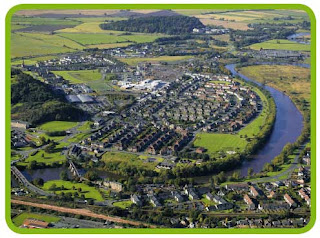As I’ve previously mentioned, the future holds the key. The planning and development that we implement now will be the deciding factor of our future. The fate of the world rests in the hands of corporate America as well as the Chinese and Indian governments. Our future depends on the methods the Canadian Government chooses to exercise when extracting oil from the earth in northern Alberta. Our future is dependent on our global fishing practices, preventing the complete deforestation of the Amazon Jungle, preventing the waste generated from the billions of products we buy each year from reaching the landfill. The future of our planet is dependent on my generation and the ones immediately after to heal the wound that industrialization has caused to our environment. Practices such as building cities with more affordable high density areas, lessening our reliance on fossil fuels, growing green, thinking green and living green are some of the keys responsibilities the whole world must adapt if there is to be a future. It’s too late for gradual change, we cannot tip toe around such sensitive sustainability/environmental issues anymore. Plans need to be drawn up, decisions need to be made and actions need to be taken. Ultimately it is up to our Governments to generate these changes but that’s not enough. Making economic, social and environmental changes is not a process that will ever be easy for any Federal power. There will always be opposition and conflict when trying to make any change and currently there are still too many global warming naysayers in power. A prime example, environmental platforms are still not at the top of politicians’ to do lists.
As citizens and contributors to society we have more power than we realize. We control what we choose to buy, where we choose to live and work, how we get around our communities, what we do with our free time and what political parties we support. Maybe we should start taking matters into our own hands. Supporting grassroots movements, making our homes more sustainable, consuming responsibly, powering our communities more efficiently, avoid being wasteful and educating ourselves to continuously improve our actions and ideologies. A little effort goes a long way, change is possible, sustainability can be achieved and matters such as cleaner air should not be a dream.
If we don’t make any changes and continue to consume at an alarming rate there will be no future worth living for. I fear however that change won’t actually happen until it’s too late. Until the sky literally starts falling I think a large percentage of the world will just continue ignoring the signs our planet has desperately been trying to show us. Our society is like a Hollywood movie that will take another few decades to finishing filming and at some point in the near future the climactic ending will be upon us. It’s in our hands to make that ending a good one but I’m not so sure this story can end happily anymore. The environmental ignorance I still see every single day fuels that pessimistic mentality. I want to win this battle; we have to win this battle. But it’s a long hard road and I’m starting to loose faith in society slowly with each passing day that nothing gets done. My message to the world…. Prove me wrong. Please.
Here is a link to an honest article talking about the sustainability movement by River Gilman. Although somewhat dated, its intentions still stand. LINK



























